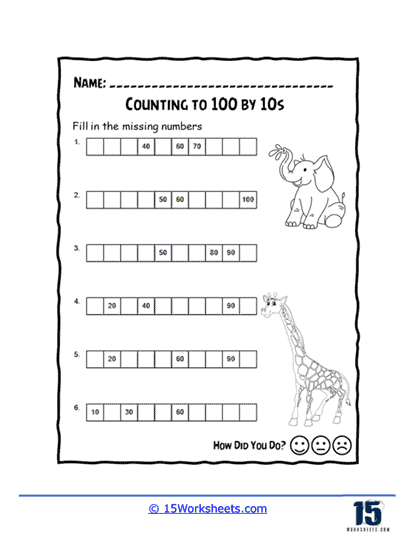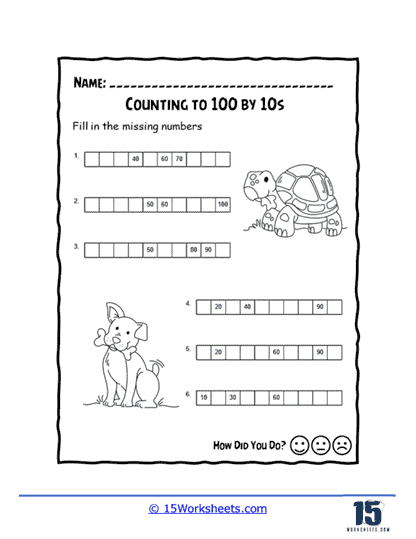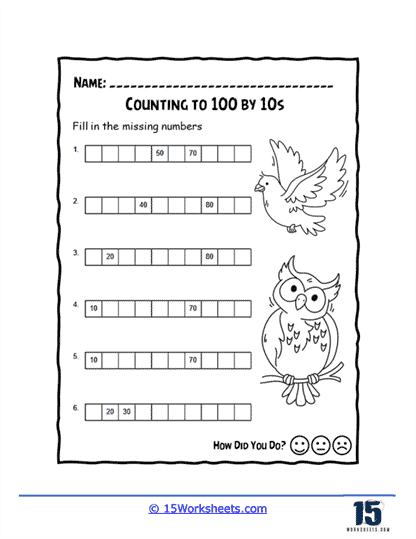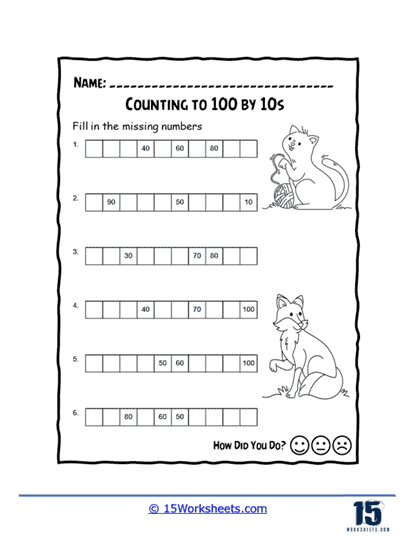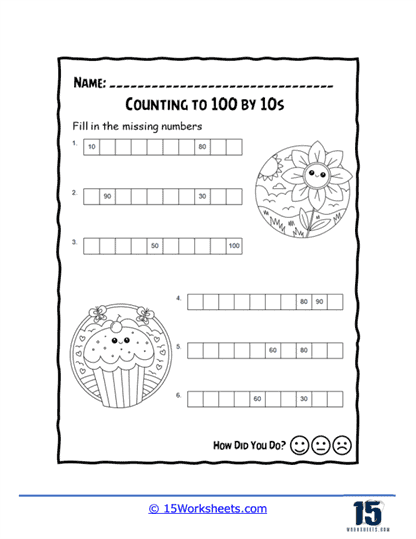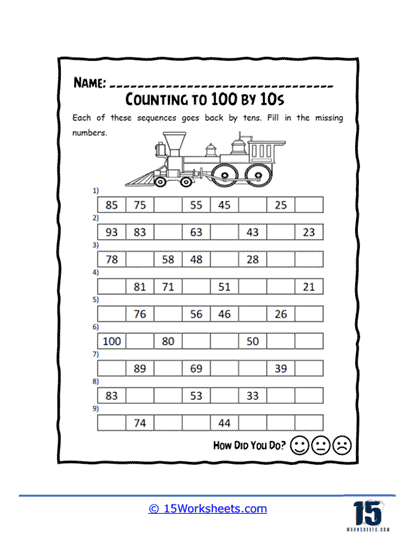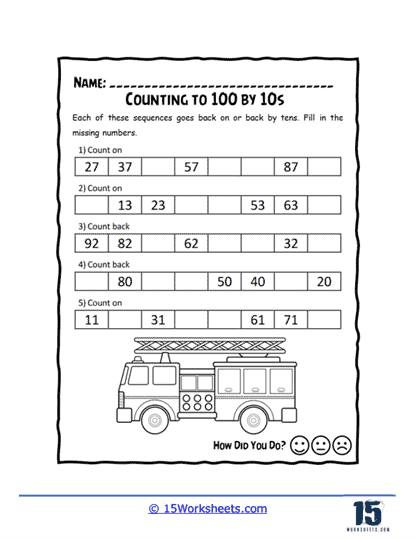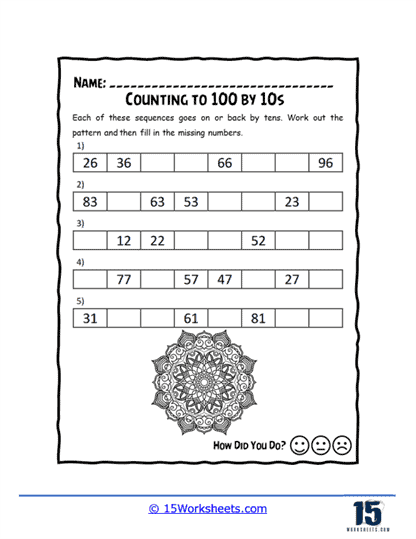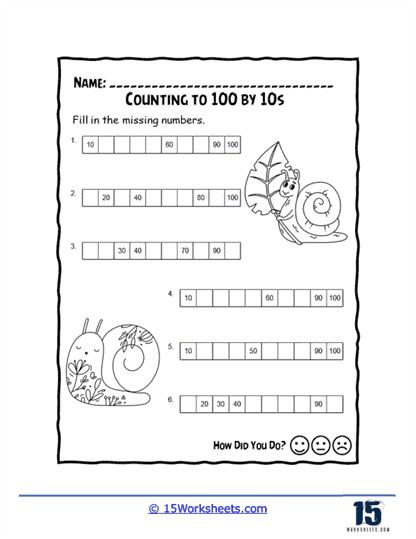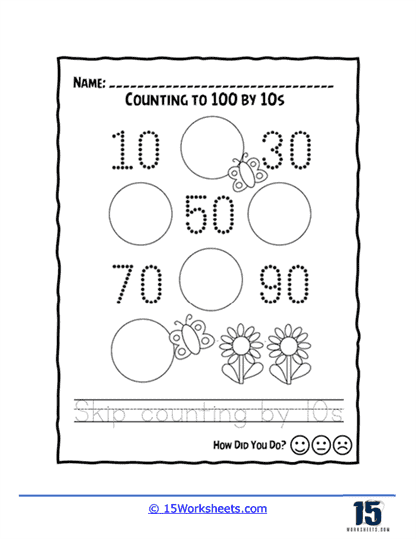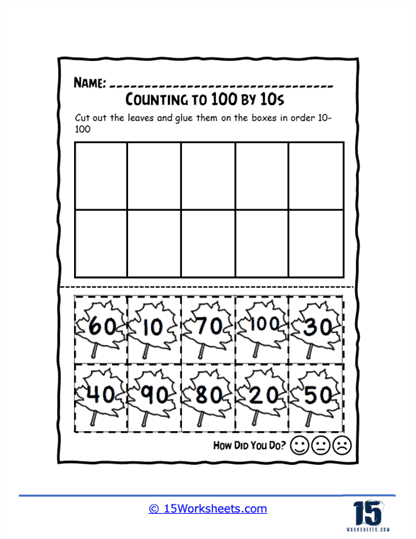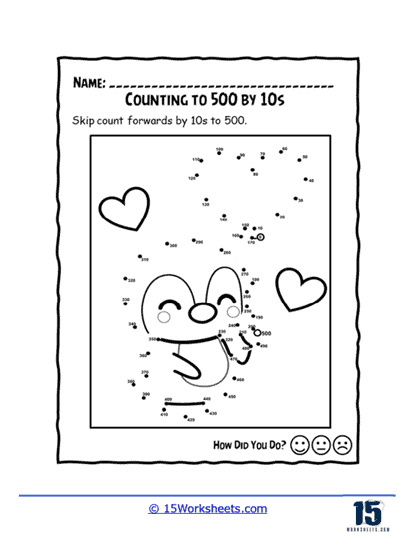Counting to 100 By 10s Worksheets
What Are Counting to 100 By 10s Worksheets?
These worksheets help students lock down the skill of being able to count from 1 to 100 by increments of 10. The worksheets feature a series of numbers with a focus on multiples of 10, such as 10, 20, 30, 40, 50, and so on.
Counting to 100 by 10s worksheets can come in many different forms, such as fill-in-the-blank exercises, matching games, and puzzles. Some worksheets might ask children to fill in the missing numbers in a series of numbers counting up to 100 by 10s, while others might ask them to circle or cross out the numbers counting up to 100 by 10s.
Counting to 100 by 10s helps you develop a strong sense of numbers and their patterns. It allows you to understand the structure and organization of numbers in a systematic way. By recognizing the pattern of adding 10 to the previous number, you gain a deeper understanding of how numbers progress.
It is a more efficient way to count larger quantities. Instead of counting one by one, which can be time-consuming and overwhelming for larger numbers, you can count by 10s and reach the desired number more quickly. This skill helps you count and work with larger numbers more efficiently as you grow.
Counting to 100 by 10s has practical applications in various real-life situations. It helps you understand concepts like time (counting minutes or hours), money (counting in multiples of 10 cents or dollars), or even measuring (counting units of 10, such as centimeters or meters). It supports your ability to navigate and comprehend numerical information in the world around you.
How to Teach Students to Count by 10s
Teaching students to count by 10s is an important skill that helps develop a strong foundation in number sense, mental math, and arithmetic operations. Here are some strategies for effectively teaching students to count by 10s:
Introduce the Concept – Start by explaining the concept of counting by 10s and how it is different from counting by ones. Use visual aids, such as number lines or charts, to show the sequence of numbers when counting by 10s (10, 20, 30, 40, 50, 60, 70, 80, 90, 100).
Teach the Pattern – Help students recognize the pattern when counting by 10s. Point out that the last digit always remains the same (0) while the first digit increases by one each time. This will help them understand the logic behind counting by 10s and make it easier to memorize the sequence.
Use Manipulatives – Provide students with manipulatives, such as base-ten blocks, to help them visualize and understand the concept of counting by 10s. Arrange the manipulatives in groups of 10 to illustrate the concept more effectively.
Use Songs and Rhymes – Incorporate songs, rhymes, or chants that involve counting by 10s. This can make learning fun and engaging, and help students memorize the sequence more easily.
Practice with Number Lines or Charts – Provide students with number lines or charts that show the sequence of numbers when counting by 10s. Encourage them to practice counting by pointing to or highlighting the numbers as they count.
Play Games and Activities – Use games and activities to reinforce counting by 10s, such as counting objects in groups of 10, playing hopscotch with multiples of 10, or using puzzles and worksheets that require students to count by 10s.
Incorporate Real-world Examples – Use real-world examples and scenarios to demonstrate the usefulness of counting by 10s, such as counting money (dimes) or calculating elapsed time in 10-minute increments.
Connect to other Math Concepts – Help students understand the relationship between counting by 10s and other math concepts, such as place value (tens and ones) or multiplication (10 times a number).
Encourage Practice and Repetition – Like any new skill, practice and repetition are key to learning to count by 10s. Encourage students to practice regularly and offer praise and support to build their confidence.
Be Patient and Supportive – Learning to count by 10s can be challenging for some students, so be patient and provide support and encouragement. Break down tasks into smaller steps and offer praise for progress and achievements.
By using these strategies and incorporating a variety of engaging activities, you can effectively teach students to count by 10s and help them develop a strong foundation in mathematics.


